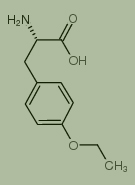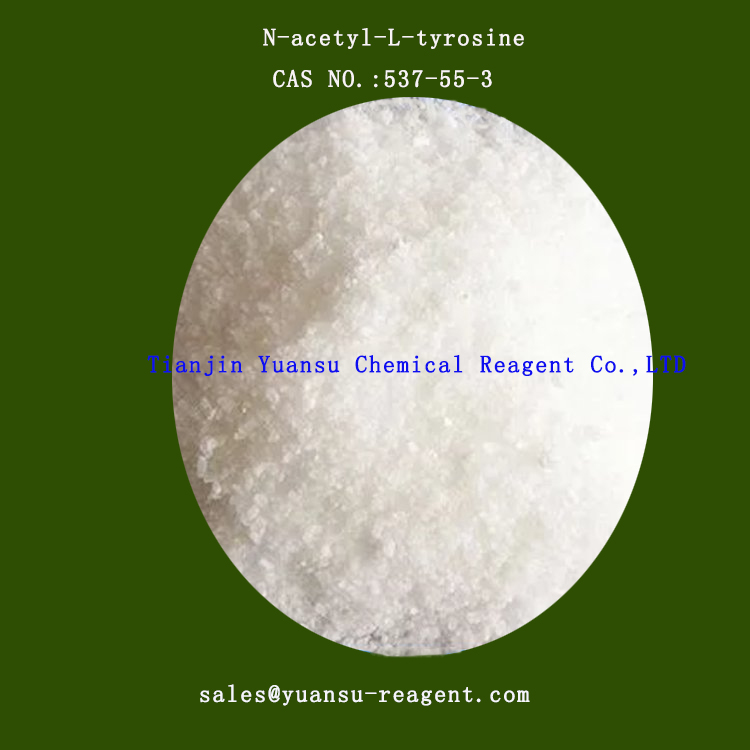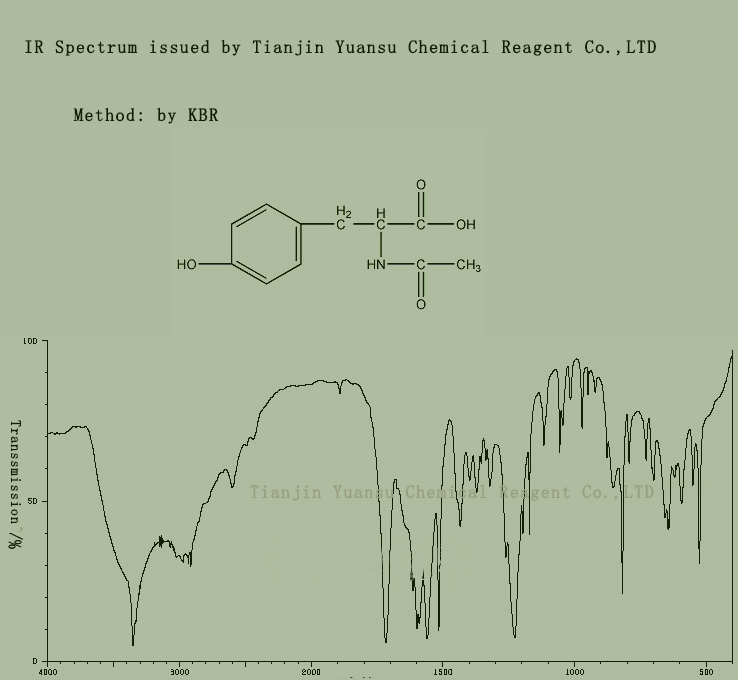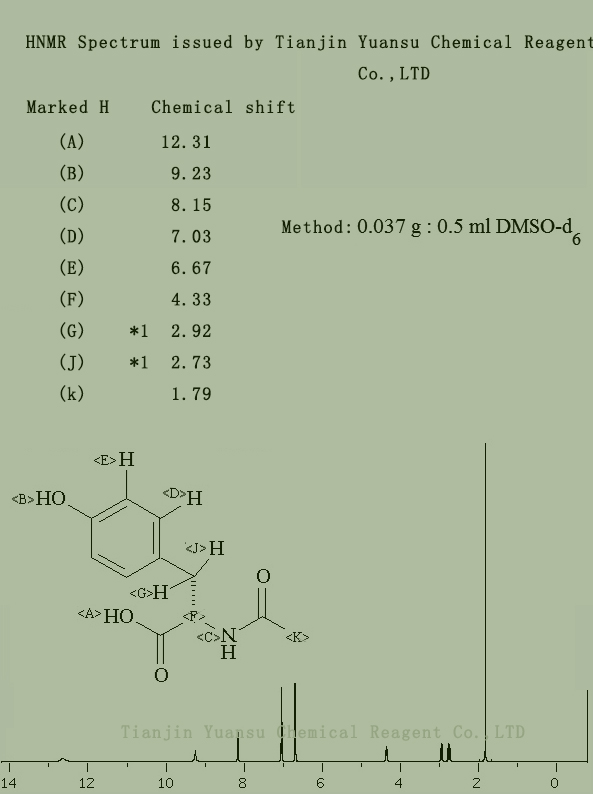N-acetyl-L-tyrosine
What is N-acetyl-L-tyrosine, cas no:537-55-3,a producer telling you the result.
CAS NO.537-55-3
If you need the products .Please send your inquiry to us through e-mail: sales@yuansu-reagent.com
To begin with, let us tell you what is the basic information of N-acetyl-L-tyrosine ?
|
Molecular Formula |
C11H13NO4 |
Molecular Weight |
223.225 |
|
Density |
1.3±0.1 g/cm3 |
Boiling Point |
531.3±45.0 °C at 760 mmHg |
|
Flash Point |
275.1±28.7 °C |
Melting Point |
149-152 °C(lit.) |
Like many stuff, it has many synonyms as follows
|
Ac-L-Tyr-OH |
|
acetyl tyrosine |
|
N-AC-L-TYR |
|
(2S)-2-acetamido-3-(4-hydroxyphenyl)propanoic acid |
|
N-Ac-Tyr |
|
n-acetyl-l-tyrosin |
|
AC-TYR-OH |
|
N-Acetyltyrosine |
|
N-acetyl-L-Tyr |
|
Ac-L-Tyrosine |
|
A-L-Tyr-OH |
|
AC-TYROSINE |
|
(2S)-2-Acetylamino-3-(4-hydroxyphenyl)propanoic acid |
|
Tyrosine, N-acetyl-, L- |
|
L-N-acetyl-Tyrosine |
|
N-Acetyl-L-tyrosine |
|
ACETYL-L-TYROSINE |
|
N-ACEYL-L-TYROSINE |
First, the chemical is very special, some technical indexes as below
If you need the products .Please send your inquiry to us through e-mail: sales@yuansu-reagent.com
Physical property data
1. Appearance: White crystal.
2. Density (g/mL, 25/4 ℃): not determined
3. Relative vapor density (g/mL, air=1): not determined
4. Melting point (º C): 152-154
5. Boiling point (º C, atmospheric pressure): undetermined
6. Boiling point (º C, 5.2kPa): undetermined
7. Refractive index: undetermined
8. Flash point (º C): undetermined
9. Specific rotation (º, C=1, In water):+ forty-eight point three
10. Spontaneous combustion point or ignition temperature (º C): not determined
11. Vapor pressure (kPa, 25 º C): not determined
12. Saturated vapor pressure (kPa, 60 º C): not determined
13. Combustion heat (KJ/mol): undetermined
14. Critical temperature (º C): not determined
15. Critical pressure (KPa): undetermined
16. Logarithmic value of oil-water (octanol/water) partition coefficient: undetermined
17. Explosion upper limit (%, V/V): undetermined
18. Lower explosive limit (%, V/V): not determined
19. Solubility: undetermined
toxicology data
None
Ecological data
This substance may be harmful to the environment and should be given special attention to water bodies.
Molecular structure data
1. Molar refractive index: 56.73
2. Molar volume (cm3/mol): 171.1
3. Waiting ratio (90.2K): 470.4
4. Surface tension (dyne/cm): 57.0
5. Polarization rate (10-24cm3): 22.48
Calculate chemical data
1. Reference value for hydrophobic parameter calculation (XlogP): -0.2
2. Number of hydrogen bond donors: 3
3. Number of hydrogen bond acceptors: 4
4. Number of rotatable chemical bonds: 4
6. Topological Molecular Polarity Surface Area (TPSA): 86.6
7. Number of heavy atoms: 16
8. Surface charge: 0
9. Complexity: 259
10. Number of isotopic atoms: 0
11. Determine the number of atomic stereocenters: 0
12. Uncertain number of atomic stereocenters: 1
13. Determine the number of chemical bond stereocenters: 0
14. Uncertain number of chemical bond stereocenters: 0
15. Number of covalent bond units: 1
Nature and stability
1. Use and store according to specifications, without decomposition, and avoid contact with oxides
2. There is a risk of eye damage. In case of contact with the eyes, immediately rinse with plenty of water and seek medical attention.
Storage
Seal with argon gas and store in a dry and dark place below 0 ℃.
Second, the Synthetic Route we will recommend is the most important for your reference?
First, synthesis line of N-acetyl-L-tyrosine CAS NO.537-55-3 as follows
Manufacturing method: The preparation of N-acetyl-L-Tyrosine can be achieved by reacting tyrosine with an acetylating agent (such as acetyl chloride) under alkaline conditions. After the reaction is completed, the product can be purified through steps such as crystallization and washing.
Third, what is the usage of N-acetyl-L-tyrosine CAS NO.537-55-3 ? pleas see below
If you need the products .Please send your inquiry to us through e-mail:sales@yuansu-reagent.com
Main Usage: It can effectively kill pathogenic microorganisms and has a broad-spectrum bactericidal effect on bacteria and fungi. It is commonly used in sterilization operations, cleaning and disinfection, and anti-corrosion preservation.
Used for the synthesis of (2S)-2-acetamido-3-(4-methoxyphenyl)propanoic acid,Cas no. 28047-05-4
Used for the synthesis of N-Acetyl-3,5-diiodo-L-tyrosine,Cas no. 1027-28-7
Used for the synthesis of o-ethyl-l-tyrosine Cas no. 32795-52-1
Besides Safety Information ofN-acetyl-L-tyrosine CAS NO.537-55-3 is also important when handling it
|
Hazard Codes |
Xi |
|
WGK Germany |
3 |
|
H.S.Code: |
2924299090 |
|
TSCA |
Yes |
|
HazardClass |
IRRITANT |
What is the appearance of N-acetyl-L-tyrosine CAS NO.537-55-3? Please see the picture ofN-acetyl-L-tyrosine CAS NO.537-55-3, below
If you need the products .Please send your inquiry to us through e-mail: sales@yuansu-reagent.com
Specification ofN-acetyl-L-tyrosine CAS NO.537-55-3, is below
Apperance: White crystalline powder.
Assay: >98.0%(HPLC)
IR identity: conform
IR Spectrum picture of N-acetyl-L-tyrosine CAS NO.537-55-3 is as follows,
H-NMR Spectrum picture of N-acetyl-L-tyrosine CAS NO.537-55-3 is as follows,
Reference of Article cited for your reference below,
(1)
Publication Date: 1998
Publication Name: Nitric Oxide in Transplant Rejection and Anti-Tumor Defense
(2)
Influence of Metal Ions on the Activity of Soil Humic-Enzyme Complexes
Publication Date: 2005
Publication Name: Use of Humic Substances to Remediate Polluted Environments: From Theory to Practice
(3)
Control of polyphenol oxidase activity using a catalytic mechanism
Publication Date: 1994
Publication Name: Protein Structure-Function Relationships in Foods








